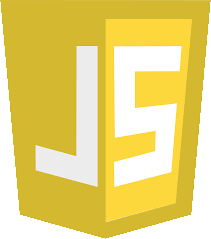JavaScript

JavaScript, often abbreviated as JS, is a programming language that conforms to the ECMAScript specification. JavaScript is high-level, often just-in-time compiled and multi-paradigm. It has dynamic typing, prototype-based object-orientation and first-class functions.
Alongside HTML and CSS, JavaScript is one of the core technologies of the World Wide Web. Over 97% of websites use it client-side for web page behavior, often incorporating third-party libraries. All major web browsers have a dedicated JavaScript engine to execute the code on the user's device.
As a multi-paradigm language, JavaScript supports event-driven, functional, and imperative programming styles. It has application programming interfaces (APIs) for working with text, dates, regular expressions, standard data structures, and the Document Object Model (DOM).
The ECMAScript standard does not include any input/output (I/O), such as networking, storage, or graphics facilities. In practice, the web browser or other runtime system provides JavaScript APIs for I/O.
JavaScript engines were originally used only in web browsers, but they are now core components of some servers and a variety of applications. The most popular runtime system for this usage is Node.js.
 Angular introduces Google's framework for building client-side
applications. First of all, it focuses on the development of SPA solutions (Single Page
Application).
In this regard, Angular inherits from another AngularJS framework. At the same time Angular
is not a new version of AngularJS, but a fundamentally new framework.
Angular introduces Google's framework for building client-side
applications. First of all, it focuses on the development of SPA solutions (Single Page
Application).
In this regard, Angular inherits from another AngularJS framework. At the same time Angular
is not a new version of AngularJS, but a fundamentally new framework.
Angular provides functionality such as two-way binding to dynamically change data in one place in the interface when model data changes in another, templates, routing, and so on.
 React also known as React.js or ReactJS) is a free and
open-source front-end JavaScript library for building user interfaces or UI components.
It is maintained by Meta (formerly Facebook) and a community of individual developers and
companies.
React can be used as a base in the development of single-page or mobile applications.
However, React is only concerned with state management and rendering that state to the DOM,
so creating React applications usually requires the use of additional libraries for routing,
as well as certain client-side functionality.
React also known as React.js or ReactJS) is a free and
open-source front-end JavaScript library for building user interfaces or UI components.
It is maintained by Meta (formerly Facebook) and a community of individual developers and
companies.
React can be used as a base in the development of single-page or mobile applications.
However, React is only concerned with state management and rendering that state to the DOM,
so creating React applications usually requires the use of additional libraries for routing,
as well as certain client-side functionality.
 TypeScript is a programming language developed and maintained
by Microsoft. It is a strict syntactical superset of JavaScript and adds optional static
typing to the language.
TypeScript is designed for the development of large applications and transcompiles to
JavaScript.
As TypeScript is a superset of JavaScript, existing JavaScript programs are also valid
TypeScript programs.
TypeScript is a programming language developed and maintained
by Microsoft. It is a strict syntactical superset of JavaScript and adds optional static
typing to the language.
TypeScript is designed for the development of large applications and transcompiles to
JavaScript.
As TypeScript is a superset of JavaScript, existing JavaScript programs are also valid
TypeScript programs.
TypeScript may be used to develop JavaScript applications for both client-side and server-side execution. There are multiple options available for transcompilation. Either the default TypeScript Checker can be used or the Babel compiler can be invoked to convert TypeScript to JavaScript.
TypeScript supports definition files that can contain type information of existing JavaScript libraries, much like C++ header files can describe the structure of existing object files. This enables other programs to use the values defined in the files as if they were statically typed TypeScript entities. There are third-party header files for popular libraries such as jQuery, MongoDB, and D3.js. TypeScript headers for the Node.js basic modules are also available, allowing development of Node.js programs within TypeScript.
The TypeScript compiler is itself written in TypeScript and compiled to JavaScript. It is licensed under the Apache License 2.0. TypeScript is included as a first-class programming language in Microsoft Visual Studio 2013 Update 2 and later, alongside C# and other Microsoft languages. An official extension allows Visual Studio 2012 to support TypeScript as well.
 jQuery is a fast, small, and feature-rich JavaScript library. It makes things like HTML document traversal and manipulation, event handling,
animation, and Ajax much simpler with an easy-to-use API that works across a multitude of browsers. With a combination of versatility and extensibility,
jQuery has changed the way that millions of people write JavaScript.
jQuery is a fast, small, and feature-rich JavaScript library. It makes things like HTML document traversal and manipulation, event handling,
animation, and Ajax much simpler with an easy-to-use API that works across a multitude of browsers. With a combination of versatility and extensibility,
jQuery has changed the way that millions of people write JavaScript.
